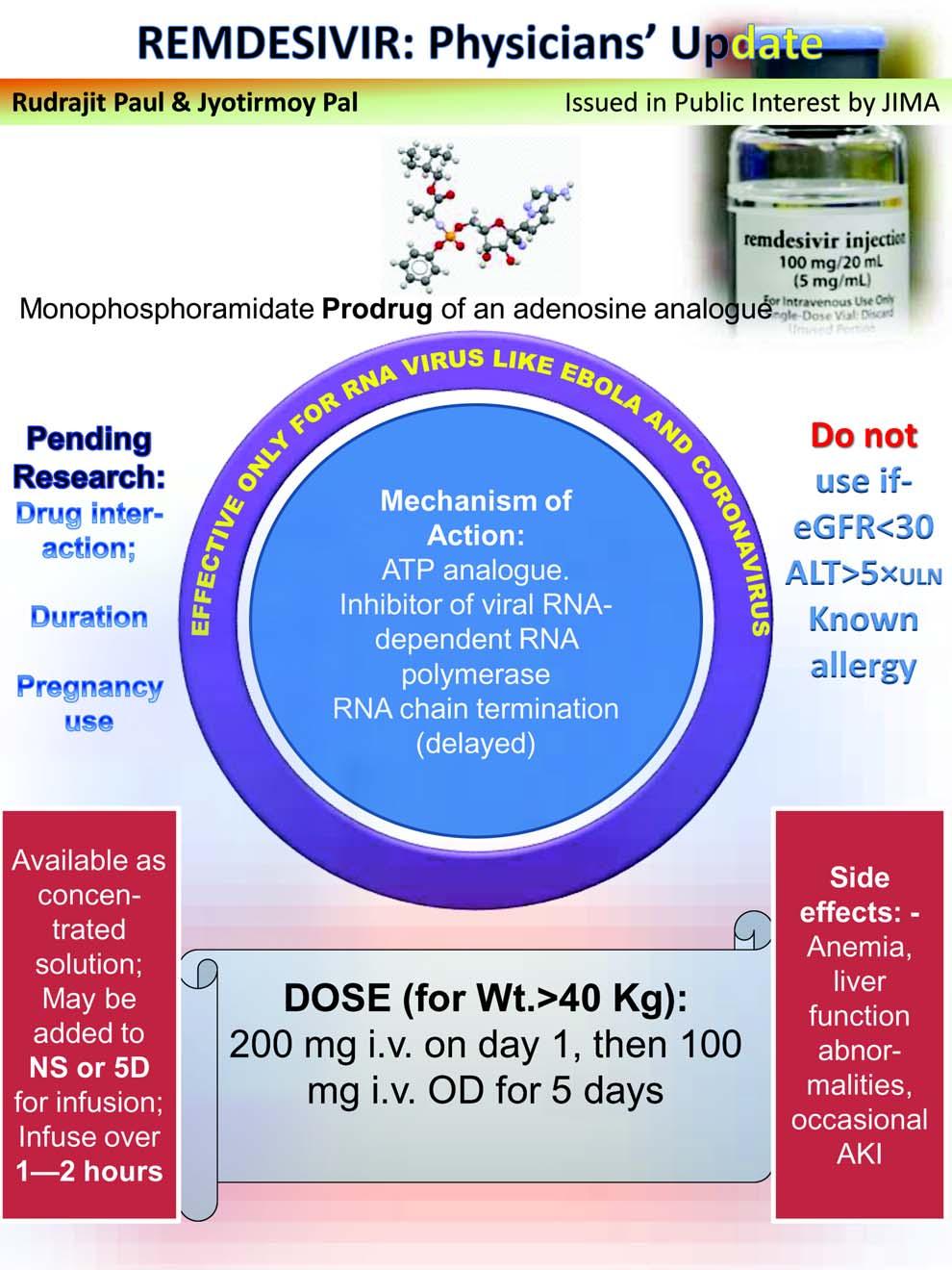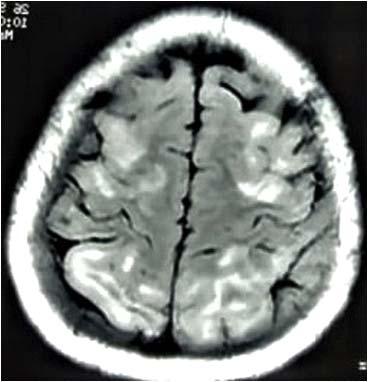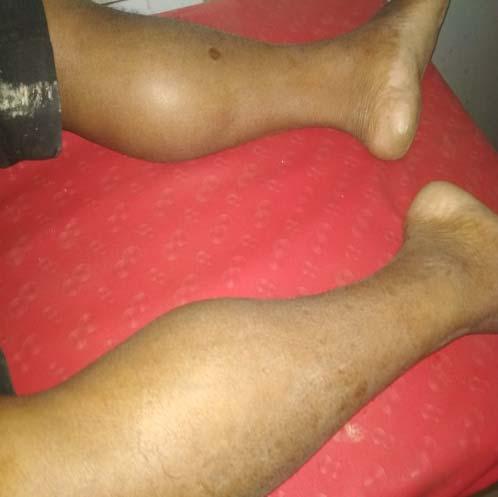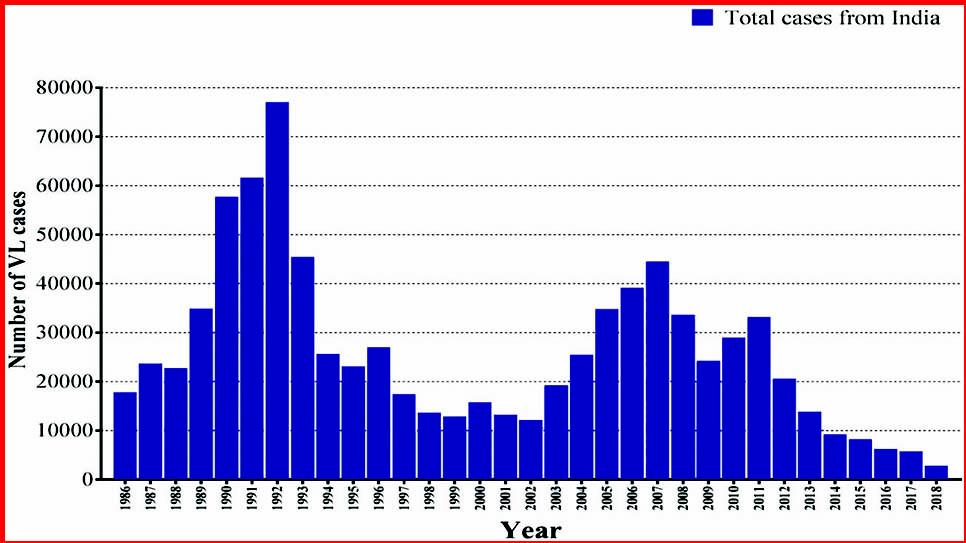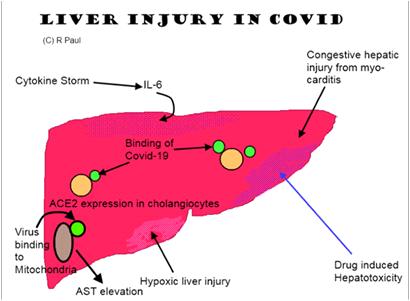
18 minute read
steroid resistant nephrotic syndrome
JOURNAL OF THE INDIAN MEDICAL ASSOCIATION, VOL 118, NO 06, JUNE 2020
Original Article Tacrolimus versus Rituximab in adult onset steroid resistant nephrotic syndrome
Advertisement
Sanjay Dasgupta 1 , Rajib Mondal 2 , Kapiljit Chakravarty 3 , Vaibhav Tiwari 4 , Raju Kumar Sahu 5 , Atanu Pal 6 , Asit kumar Mandal 7 , Smita Divyaveer 8
Introduction : Focal segmental glomerulosclerosis and Minimal change disease are two most important causes of nephrotic syndrome in the adults. Non response with fourmonth therapy in adults with full dose steroid is defined as steroid resistant nephrotic syndrome. Steroid resistance predicts a high risk of progression to end stage renal disease. Calcineurin inhibitors are the first line treatment for steroid resistant disease. Other novel agents like Rituximab is also tried in the disease. This study is done to compare the efficacy of tacrolimus and rituximab in steroid resistant minimal change disease and focal segmental glomerulosclerosis.
Methods : This is an open label prospective randomized parallel group interventional study with a sample size 15, duration of 22 months and conducted in Department of Nephrology, IPGME&R and SSKM hospital Kolkata. Patients of 18 to 60 years of age with kidney biopsy proven minimal change disease and focal segmental glomerulosclerosis who are steroid resistant are randomly assigned in two arms in 2 : 1 distribution for tacrolimus and rituximab.
Results : In tacrolimus arm 70% of patients achieved any form of remission among which 40% achieved complete remission in the study period. In rituximab arm 100% of patients achieved any form of remission among which 40% achieved complete remission. The decrease in proteinuria in both groups from beginning to end of the study are each statistically significant. In tacrolimus group the mean eGFR decreased and in rituximab group mean eGFR increased but each of them is not statistically significant. Two patients did not respond to tacrolimus.
Conclusion : In both groups there was comparable remission without any statistically significant change in eGFR. There is limited serious infection in rituximab group. Recurrent infection is more
common in tacrolimus group. [J Indian Med Assoc 2020; 118(6): 26-30]
Key words : Nephrotic syndrome, steroid resistant, remission, Tacrolimus, Rituximab.
Minimal change disease (MCD ) is a cause of nephrotic syndrome in approximately 10% of adults. Focal segmental glomerulosclerosis (FSGS) accounts for 35% of all adult onset nephrotic syndrome,
1 MD (Medicine), DM (Nephrology) Associate Professor, Department of Nephrology, NRS Medical College, Kolkata 700014 2 MD (Medicine), DM (Nephrology), Senior resident, Department of Nephrology, NRS Medical College, Kolkata 700014 and 3 MD (Medicine), DM (Nephrology), Tutor, Department of Nephrology, B S Medical College, Bankura 722101 4 MD (Medicine), DM (Nephrology), Consultant, Department of Nephrology, Sir Ganga Ram Hospital, New Delhi 110060 5 MD (Medicine), DM (Nephrology), Assistant Professor, DKS Postgraduate Institute and Research Centre, Chhattisgarh 492001 6 MD (Medicine), DM (Nephrology), Assistant Professor, Department of Nephrology & Rheumatology, IPGME&R, SSKM Hospital, Kolkata 700020 7 MD (Medicine), DM (Nephrology), Senior Resident, Department of Nephrology, Burdwan Medical College & Hospital, Burdwan 713101 8 MD (Medicine), DM (Nephrology), Post Graduate Institute of Medical Education and Research, Chandigarh 160012
Received on : 18/11/2019 Accepted on : 18/03/2020 Editor's Comment :
Both tacrolimus and rituximab are effective in treating
steroid resistant nephrotic syndrome.
Rituximab is not inferior to tacrolimus in treating
Steroid resistant nephrotic syndrome due to minimal
Corresponding Author
change disease and focal segmental glomerulosclerosis.
The chance of drug non compliance is lesser with
rituximab than tacrolimus.
and over 50% among African Americans 1 . MCD and FSGS primarily affect the podocytes (podocytopathies) and may be the spectrum of the same disease having same medical management. Adult nephrotic syndrome, if steroid resistant predicts a high risk of progression to end stage renal disease. FSGS may be primary or secondary to adaptive response to glomerular hypertrophy or hyperfiltration. In secondary FSGS, immunosuppression is not indicated. Initial therapy in MCD and FSGS is done with prednisolone 1 mg / kg / day, maximum 80 mg or 2 mg /kg alternate day, maximum 120 mg for minimum 4 weeks and
26
JOURNAL OF THE INDIAN MEDICAL ASSOCIATION, VOL 118, NO 06, JUNE 2020
maximum 4 months that is 16 weeks. Non response to 4-month therapy with full dose steroid is defined as steroid resistant nephrotic syndrome. Around 10% patient of MCD is steroid resistant, which may be due to undetected FSGS. Calcineurin inhibitors (CNI) ie, cyclosporine and tacrolimus are considered to be first line treatment of steroid resistant disease 2,3 . In this study we have used tacrolimus. Nephrotoxicity is a major side effect of CNI s, apart from other adverse effects. So, a study with a novel agent is required having equal or better efficacy and favorable side effect profile. Rituximab, a chimeric monoclonal antibody directed against CD 20 bearing cells are tried in treatment of MCD and FSGS. There are some studies which show some benefit of Rituximab in treatment of steroid resistant disease 4-6 . There is no randomized control study comparing efficacy and safety of CNIs and Rituximab.
M ATERIAL AND MEDHODS
This is a single centeropen label prospective randomized control parallel group interventional study conducted in the Department of Nephrology, IPGMER & SSKM Hospital Kolkata from Feb 2016 to Dec 2018. Approvalfrom Ethical Committee IPGME&R was taken prior to study initiation. CTRI Registration number is CTRI/2018/01/011316, Registered on 15/01/2018.
All definitions are used as per KDIGO glomerulonephritis guideline published in 2012.
Definition :
Complete remission Reduction of proteinuria to <0.3 g/d or <300 mg/g (<30 mg/mmol) urine creatinine and normal serum creatinine and serum albumin >3.5 g/dl (35 g/l)
Partial remission Reduction of proteinuria to 0.3–3.5 g/d (300-3500 mg/g [30–350 mg/mmol]) urine creatinine and a decrease >50% from baseline, and stable serum creatinine (change in creatinine <25%)
Relapse Proteinuria >3.5 g/d or >3500 mg/g (>350 mg/ mmol) urine creatinine after complete remission has been obtained
Steroid Persistence of proteinuria despite prednisolone resistant 1 mg/kg/d or 2 mg/kg every other day for >4 months
Inclusion criteria : (1) Patients of age within 18 to 60 years. (2) Biopsy proven MCD or FSGS who received 16 weeks of oral prednisolone in adequate dose and have not achieved remission. (3) Estimated glomerular filtration rate (eGFRbyMDRD) > 30 ml / min /1.73m 2 Body surface area. (4) Tubular atrophy and interstitial fibrosis < 25% of biopsy area. (5) Patient receiving maximum tolerable dose of antiproteinuric 27 medication. (6) Patients willing to give consent for the study.
Exclusion criteria : (1) Patients with active infection. (2) Any contraindication to any of the medication used in the study. (3) Diabetes Mellitus. (4) Hepatitis B, Hepatitis C or HIV infection. (5) Liver function abnormalities. (6) Active neoplastic condition. (7) Chronic diarrhea. (8) Pregnancy. (9) Secondary FSGS. (10) Collapsing variant of FSGS. (11) Previous therapy within six months with mycophenolate, azathioprine, cyclophosphamide, and cyclosporine. (12) More than one episode of serious infections eg peritonitis, pneumonia, cellulitis in the past twelve months. (13) Current or previous therapy for tuberculosis.
Primary outcome : complete and partial remission
Secondary outcome : (1) change in eGFR at completion of therapy. (2) Doubling of baseline serum creatinine levels. (3) Time required to achieve complete or partial remission. (4) Adverse effects (tremors, nephrotoxicity, gum hypertrophy, impaired glucose tolerance / diabetes mellitus, diarrhea, impaired fasting lipid profile, infection).
Study end point : (1) Completed 12 month follow up. (2) Patient in tacrolimus arm who do not achieve complete or partial remission within 6 months.(3) Death of patient.
Data capture was done in baseline, 1 month, 2 month, 3 month, 6 month, 9 month and 12 month.
Steroid resistant FSGS and MCD population was randomly assigned in two arms in 2 : 1 distribution for tacrolimus and rituximab. Arm 1 comprised of tacrolimus and arm 2 of rituximab. Tacrolimus was given in dose of 0.075 mg /kg in two divided doses. Dose was adjusted to maintain tacrolimus trough level (T0 level ) between 5 -10 ng /ml . In patients who achieve complete remission within 6 months, the dose of tacrolimus was reduced to achieve T0 level 3 – 6 ng / ml to be continued till 12 months. The subjects who have not achieved any form of remission at 6 months are declared tacrolimus resistant and their tacrolimus was stopped. All patients were prospectively followed up for 12 months except who reached end point. In Arm 2, patients received inj Rituximab 375 mg / m 2 body surface area once weekly IV for total 4 doses with proper premedication as per manufacturer instruction.Rituximab dissolved in normal saline at concentration of 2mg/ml was infused over 3-4 hour. Initial infusion rate was 50 mg/hour, then in next hour the infusion rate was increased. Premedication used were oral acetaminophen 15mg/kg and oral
diphenhydramine 0.5 mg/kg 30 minute prior to first
JOURNAL OF THE INDIAN MEDICAL ASSOCIATION, VOL 118, NO 06, JUNE 2020
dose of rituximab. Intravenous hydrocortisone 4mg/kg was given prior to first dose of rituximab. Patients were monitored for infusion related reaction and screened for infection in each visit. Rituximab dose was repeated in case of no response after 6 months of last dose. Other therapy including atorvastatin, ACE inhibitors, 28
Table 1 — Histological types in study group FSGS MCD
Tacrolimus 9 1 Rituximab 4 1 Total 13 2
Total 95 patient of MCD & FSGS
Assessed for eligibility (n=17)
Excluded (n=2) Did not give consent (n=1) Did not meet inclusion criteria (n=1)
Randomization (n=15)
Allocated to tacrolimus group N=10 Allocated to rituximab group n=5
Table 2 — Baseline characteristics in two groups Baseline characteristics of the group
DRUG N Mean Std. P Value Deviation
Reached end point N=3
Follow up=12 month
Creatinine Rituximab 5 Tacrolimus 10 1.016 0.393 0.579 1.148 0.436 Analysis n=10 Analysis n=5 eGFR Rituximab 5 78.000 25.980 0.894 Tacrolimus 10 80.200 31.090 angiotensin receptor blockers and low dose steroid Urea Rituximab 5 29.600 3.9115 0.897 Tacrolimus 10 30.200 9.635 Total protein Rituximab 5 5.240 0.844 0.682 was continued in both the arms. R ESULTS Total 95 adult nephrotic syndrome patients due to Tacrolimus 10 5.050 0.820 FSGS and MCD were either diagnosed or referred to Albumin Rituximab 5 Tacrolimus 10 24 hour urinary protein Rituximab 5 2.840 0.577 0.358 2.540 0.573 6310.600 2273.840 0.595 our department in the study period. Among them 17 patients developed steroid resistance in the study period. Two patients among the steroid resistant group Tacrolimus 10 7005.000 2352.636 were excluded as they did not meet the inclusion Haemoglobin Rituximab 5 10.720 1.052 0.324 Tacrolimus 10 11.250 0.891 Total count Rituximab 5 6902.000 2113.721 0.266 criteria. The15 steroid resistant MCD and FSGS patients were randomized with random number table in two group in 2:1 distribution in tacrolimus and Tacrolimus 10 5956.000 1099.294 rituximab group respectively. Steroid resistant disease Cholesterol Rituximab 5 382.800 53.457 Tacrolimus 10 449.200 140.229 Triacyl glycerol Rituximab 5 285.000 69.598 0.332 0.702 is 17.89% of study population. In tacrolimus group total number of patients is 10 (male 8 and female 2 ) and in rituximab group total number of patients is 5 (male 3 Tacrolimus 10 307.700 118.618 and female 2). In tacrolimus group the mean age of patient was 34.1±10.14 year and in rituximab group the mean age was 36.2±13.04 years
Comparison of response in two groups are as follows : (Table 1).
Month of Drug No Partial Complete Any Total follow up group remission remission Remission response The baseline characteristics in the both group are comparable and the 1 month tacrolimus 7(70%) 2(20%) 1(10%) 3(30%) 10 rituximab 1(20%) 4(80%) 0 4(80%) 5 3 months tacrolimus 3(30%) 5(50%) 2(20%) 7(70%) 10 rituximab 0 4(80%) 1 (20%) 5(100%) 5 (Table 2) The average time of achievement of complete remission in tacrolimus group 6 months tacrolimus 3(30%) 4(40%) 3(30%) 7(70%) 10 was 100 days (confidence interval 14.5 rituximab 0 4(80%) 1(20%) 5(100%) 5 9 months tacrolimus 4(40%) 2(20%) 4(40%) 6(60%) 10 rituximab 2(40%) 1(20%) 2(40%) 3(60%) 5 12 months tacrolimus 3(30%) 4(40%) 3(30%) 7(70%) 10 to 185.4days) and in rituximab group is 180 days (confidence interval 3.6 to 356.4 days). Both groups are comparable. rituximab 1 3(60%) 1(10%) 4(80%) 5 In tacrolimus group the average time
differences are not clinically significant
JOURNAL OF THE INDIAN MEDICAL ASSOCIATION, VOL 118, NO 06, JUNE 2020
to achieve first partial remission is 71.143 days (confidence interval 27.1 to 56.86 days) and in rituximab group average time to achieve first partial remission is 42 days (confidence interval 41.1 to 113.1 days). Both groups are comparable.
In tacrolimus arm the mean baseline proteinuria was 7005 mg/24 hour and in the end of study it decreased to 1520.66 mg/day. The decrease is significant statistically. In rituximab group baseline proteinuria was 6310 mg/24 hour which decreased to 1240.85 mg/24 hour. The decrease of proteinuria is also significant in rituximab group.
It is observed that in rituximab arm nadir 24 hour proteinuria was achieved at around 3 month to 6 month and then gradually it showed increasing trend after 6 month.
In tacrolimus group the baseline mean creatinine was 1.14mg/dl (SD±0.43) and at the end of study it was 1.19mg/dl (SD±0.54), which is increase from baseline but not significant. In rituximab arm the baseline mean creatinine was 1.01 mg/dl (SD±0.39) and at the end of study 0.79mg/dl (SD±0.18), which is decrease from baseline but is not statistically significant.
In tacrolimus group baseline eGFR was 80ml/min (SD±31.09) and at the end of study the mean eGFR is 78.28ml/min ( SD±33.8), which is decreasing trend but not statistically significant. In rituximab group the eGFR increase from baseline but it is not statistically significant.
In tacrolimus group three patients did not respond to treatment neither complete nor partial remission. So their study was ended on 6 th month due to nonresponse. But in rituximab group all patients achieved any form of remission. But the difference is not statistically significant.
In tacrolimus group there is doubling of creatinine in one patient but in rituximab group no patient has doubling of creatinine. But the finding is not statistically significant.
More than 30 present raises of creatinine occurred in 4 patients in tacrolimus arm but in no patient in rituximab arm but the difference is not significant.
In tacrolimus arm 3 patients relapsed which is 30% of tacrolimus treated patient and in rituximab arm 2 patients relapsed, which is 40% of rituximab treated patient.
In rituximab arm the first relapse occurred in mean duration of 225 days(confidence interval 136.8 to 313.2days) and in tacrolimus group the mean duration of relapse is 180 days (confidence interval 91.2 to 208.8 days). So in tacrolimus group the relapse occurred 29 earlier than rituximab group. But the difference is not statistically significant.
Adverse effects : Rituximab has infusion related side effect including chill and rigor, back pain and chest pain during infusion. These adverse effectsoccurred in one patient. No second dose infusion reaction occurred. No patient had to discontinue rituximab treatment. In Rituximab group one patient had severe respiratory tract infection which needed hospitalization and intravenous antibiotic. Another patient had multiple upper respiratory tract infection which was treated on outpatient basis. Intacrolimus group 3 patients developed multiple upper respiratory tract infection, which were treated on outpatient basis. A patient who did not respond to tacrolimus developed bacterial peritonitis and requiredhospitalization. In tacrolimus group, altered blood glucose levels were detected in 2 patients. Among them one needed oral antidiabetic and other responded to lifestyle modification. Two patients had sleep disturbance and one patient among them had tremor in hand. One patient developed diarrhea which was non severe and managed conservatively with dose reduction (Table 3).
D ISCUSSION
Steroid resistant MCD and FSGS may progress to end stage renal disease. Calcineurin inhibitors are established therapies of the disease. Our study is a non inferiority trial between tacrolimus, which is a standard therapy with rituximab. In our study, in tacrolimus arm 70% patients achieved any form of remission, of which 40% achieved complete remission. 30% patients did not achieve any form of remission. In the study by Ramchandran R et al, total remission is 52.5% 7 , complete remission being 38.6% and partial
Table 3 — Adverse event
Tacrolimus Rituximab
Chill and rigor during infusion NA 1 Back pain during infusion NA 1 Chest pain during infusion NA 1 Multiple upper respiratory tract infection 3 1 Oral candidiasis 1 0 Superficial fungal infection 2 0 Hospitalisation 1 1 Anaphylactoid reaction NA 0 Bacterial peritonitis 1 0 Altered glucose tolerance 2 0 Difficult controlling blood pressure 1 0 Tremor 1 0 Sleep disturbance 2 0 Diarrhoea 1 0 Total 15 5
remission 13.6%, tacrolimus resistant 47.7%. Our
JOURNAL OF THE INDIAN MEDICAL ASSOCIATION, VOL 118, NO 06, JUNE 2020
study shows better response rates, possibly because we included MCD also. In the study done by Li Fan et al 8 , total response with tacrolimus was 75%, among response complete remission was 58.3% and partial remission was 16.7%. Our study shows similar result with this group. In rituximab arm, 100% patients achieved any form of remission. Among remission, 40% achieved complete remission and 60% achieved partial remission. No patient was rituximab resistant. Kong et al showed that in rituximab treated patients, MCD patients achieved 100% remission and FSGS patients achieved 75% remission 9 . Fernandez et al shows rituximab failed to treat 5 out of 8 patients 10 . The three patients who improved showed remarkable improvement in renal function. El Rashid et al showed that in MCD group 31 out of 31 patients achieved remission 11 , and in FSGS group 17 out of 18 patients achieved remission. This study shows near similar result to our study.Similar to our study, this study shows increase in proteinuria after 6 to 8 months which may be due to loss of the effect of B lymphocyte suppression. In rituximab group, 80.34% reduction in proteinuria occurs, which is significant p< 0.000. The time to achieve any remission in tacrolimus group is 52 days and in rituximab group 42 days. The difference is not statistically significant. At the end of the study 70% patients in tacrolimus group and 80% patients in rituximab group maintain any form of remission. There is better preservation of kidney function in terms of GFR and serum creatinine in rituximab group than tacrolimus group, though is not statistically significant. In rituximab group, the relapse is more but is not statistically significant. Rituximab had infusion related side effects including chill and rigor, back pain and chest pain in one patient. One patient in our study had severe respiratory tract infection needing hospitalization. In tacrolimus group, three patients developed repeated upper respiratory tract infection which were treated on outdoor basis. One patient developed bacterial peritonitis requiring hospitalization. Altered blood glucose was detected in two patients. Rituximab is a well-tolerated drug. The main problem with this is the requirement of intravenous administration and close monitoring with premedication and the drug cost. No death occurred during the study. C ONCLUSION
This study confirms the benefit of treatment of steroid resistant MCD and FSGS. In our study it is found that both the drugs are effective in treating SRNS. It confirms that rituximab is not inferior to tacrolimus in treating SRNS due to MCD and FSGS. The chance 30 of drug non compliance is lesser with rituximab than tacrolimus.
L IMITATIONS
The study has multiple limitations. The main limitation is small sample size in study population. It is a single center study which do not include multiethnic population. We used one drug which is intravenous and the other oral. Double dummy model would have been better. In this study CD 19/ CD 20 lymphocyte count was not measured. The number of doses of rituximab was thus based on experience rather than targeting specific CD 19 and CD 20 cell count.
Funding : None
REFERENCES
1 Haas M, Meehan SM, Karrison TG, Spargo BH — Changing etiologies of unexplained adult nephrotic syndrome: a comparison of renal biopsy findings from 1976-1979 and 1995-1997. Am J Kidney Dis 1997; 30:621. 2 Ittel TH, Clasen W, Fuhs M — Long-term ciclosporine A treatment in adults with minimal change nephrotic syndrome or focal segmental glomerulosclerosis. Clin Nephrol 1995; 44: 156-62 3 Li X, Li H, Ye H — Tacrolimus therapy in adults with steroidand cyclophosphamide-resistant nephrotic syndrome and normal or mildly reduced GFR. Am J Kidney Dis 2009; 54: 51- 8 4 Kronbichler A, König P, Busch M, et al — Rituximab in adult patients with multi-relapsing/steroid-dependent minimal change disease and focal segmental glomerulosclerosis: a report of 5 cases. Wien KlinWochenschr 2013; 125: 328. 5 Ochi A, Takei T, Nakayama K — Rituximab treatment for adult patients with focal segmental glomerulosclerosis. Intern Med 2012; 51: 759. 6 Fernandez-Fresnedo G, Segarra A, González E — Rituximab treatment of adult patients with steroid-resistant focal segmental glomerulosclerosis. Clin J Am Soc Nephrol 2009; 4:1317. 7 Ramachandran R, Kumar V, Rathi M, Nada R, Jha V, Gupta
KL, et al — Nephrol Dial Transplant. 2014 Oct;29(10):1918- 24. doi: 10.1093/ndt/gfu097. Epub 2014 Apr 24 8 Li Fan Qinghua, Liu Yunhua, Liao Zhibin, Li Yulian Ji Zhenhua,
Yang Jian, Chen Junzhou, Fu Jinli Zhang Yaozhong Kong
Ping Fu Tanqi Lou Zhengrong Liu Xueqing Yu Wei Chen —
Tacrolimus is an alternative therapy option for the treatment of adult steroid-resistant nephrotic syndrome: a prospective, multicenter clinical trial. Int UrolNephrol 2013; 45(2):459-68. 9 Kong WY, Swaminathan R, Irish A — Our experience with rituximab therapy for adult-onset primary glomerulonephritis and review of literature. Int Urol Nephrol 2013; 45: 795-802. 10 Fernandez-Fresnedo G, Segarra A, Gonzalez E, Alexandru
S, Delgado R, Ramos N, et al — Rituximab treatment of adult patients with steroid-resistant focal segmental glomerulosclerosis. Clin J Am Soc Nephrol 2009; 4: 1317- 23. 11 El-Reshaid K, Sallam HT, Hakim AA, Al-Attiyah R — Rituximab in treatment of idiopathic glomerulopathy. Saudi J Kidney Dis
Transpl 2012; 23: 973-8.
Conflict of Interest : None

